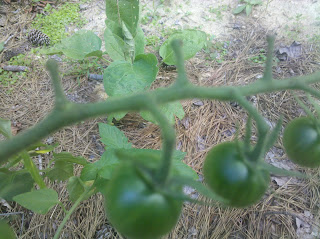About 6-8 weeks ago, upon discovering a bug that looks like
the one pictured above, my husband and I had a conversation that went something
like this:
Me: Hey, check out this cool bug! I wonder what it is?
Husband: That’s cool! I think it looks like a bee or wasp.
Me: So, you think it’s a beneficial insect?
Husband: Yeah. Look how CUTE it is!
Fast forward to present day:
Not cute. NOT CUTE AT ALL!!!!!!
If only we had known then. This little bug is single-handedly responsible for
the loss of my ENTIRE squash crop. It’s
not a cute little native bee or wasp – it’s a MOTH! And not just any moth, it is the squash vine
borer.
The squash vine borer is a weird moth in that it is active
during the day. They overwinter in cocoons in the soil, then they emerge in late May or early June
in our area. They mate and lay eggs at
the base of squash plants. The eggs
hatch and turn into these guys:
The larvae literally bore through the squash vine, hence the
name. As you can imagine, boring through
a plant’s main stem doesn't make for a very happy plant. This usually results in the death of the plant. In my case, it resulted in the death of ALL
my plants.
Luckily, there are a number of chemical-free suggestions for dealing with squash
vine borers.
 |
| Squash vine borer defense squad. |
Destroy infected plants. If you have an infected/dead plant,
you should discard of it so the larvae can’t come back as an adult next
year. I gave all of the dying squash
plants to the chickens. If you have chickens, you will know that the only thing
more destructive than a flock of chickens would probably be fire. My chickens
took great delight in shredding and pecking the vines. I’m pretty certain if they didn’t eat the
squash vine borer larva, they at least stomped them to death.
Plant as early as possible.
The squash vine borer emerges from its winter slumber in early summer –
late May or early June in this area. By
planting early, you can give your vines a head start on the squash vine borers.
(I wish I had done this. I didn’t plant my squash until mid-May.)
Use a floating row cover.
If the moths can’t get to the plant, they can’t lay an egg. You should plan on using row covers when the
adults are active (late May, early June).
Keep in mind that a row cover will prevent bees from pollinating!
Set traps to know when they have emerged. You can tell when
the squash vine borers are emerging by looking for the adults, or by setting a
yellow bowl full of water in your garden.
The moths are attracted to the yellow, and get trapped in the
water. When you find one in your trap,
you know it is time to take action against them. It is also a sign to start looking for eggs on the stems.
Protect the stem.
Block the moths from laying eggs by wrapping aluminum foil or pantyhose
around the stem of the vine. I might give this a try.
Plant vine crops that are usually not
attacked by squash vine borers. Try butternut squash, cucumbers, melons, and
watermelons. I planted out some butternut squash a couple weeks ago. I
hope they do well!
Hand pick and destroy eggs. I think this one might be hard to do, but I'd be willing to give it a shot.
A second planting of summer squash
made in early July will mature after adult borers have finished laying eggs. I’m doing this: I have multiple summer squash
plants started inside that are ready to go out now. This might not be a
guaranteed strategy because our area can have two generations of squash vine
borers.
Till the soil in fall. This will
expose the larvae to freezing temperatures, and it will allow you to find and
destroy them.
Here is a nice publication about squash vine borers from the University of Tennessee.
Watch out squash vine borers. This is
WAR!
























